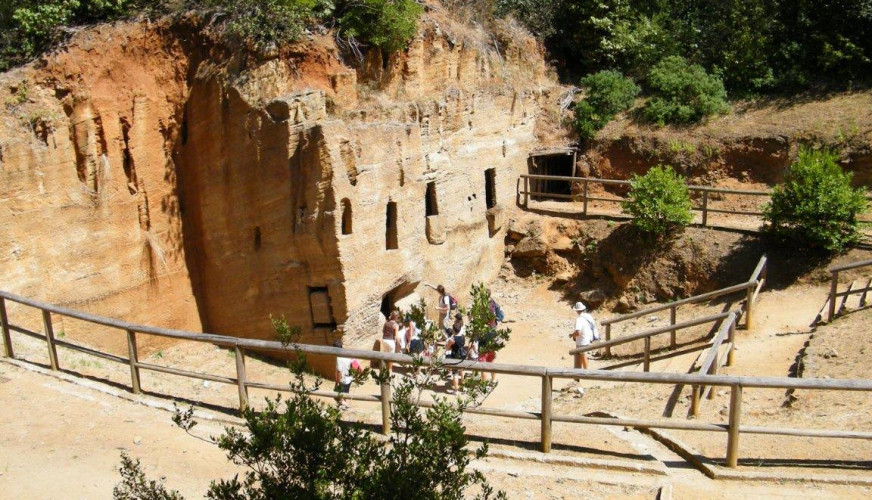Populonia
Tappa
Località
Populonia
Populonia
Ancient Popluna was located in a place of outstanding beauty, and dominated the Gulf of Baratti. Like all twelve Etruscan cities, it was ruled by the aristocracy.
The historical city’s acropolis corresponds to the modern-day Poggio del Castello and Poggio del Telegrafo, located at the south-west end of the Gulf. In ancient times, the settlement probably spread onto the surrounding high plains and the gulf area.
Set amidst green meadows and the pine trees lining the coast, we can see the monumental necropolis with the high tombs belonging to the Etruscan princes.
We also find the industrial district here: in fact, together with Volterra it was one of the busiest Etruscan mining centres and the location of their metal-working industry. This was due to the fact that the nearby Isle of Elba had large deposits of iron and other minerals. The island stands opposite the Populonia headland and the ferries to and from the island.
The Etruscan city originated in the Iron Age, in the 9th century BC, but reached its peak in the 6th century BC.
In addition to having exploited the Campiglio mineral resources of the Campiglio area and Elba, which made it one of the most flourishing metal-working centres of bronze and iron, Populonia owes its fortune to its superb geographical position.
Populonia became an important crossroads for Tyrrhenian trade from the Bronze Age. It was a sea port and a privileged meeting place for people arriving from other areas of the Mediterranean.
The Tuscan archipelago was under the rule of this Etruscan city and connected it to Corsica and Sardinia, making it a maritime power.
In the 6th century BC, the city enjoyed its maximum splendour, hosting thousands of inhabitants and had an acropolis, a necropolis and several port and industrial districts overlooking the Gulf of Baratti. As we will see was so typical of ancient cities, Populonia was surrounded by a huge city wall. The acropolis and the city were defended by a first perimeter wall, while a second protected the living quarters. The industrial quarters had expanded beyond the oldest necropolises, leaving large amounts of iron slag left over from the metal working.
In Roman times, the Latin historian Livy told us that in 205 BC, Populonia supplied Scipio Africanus with enough iron for his expedition to Africa, during the Second Punic War.
Populonia always retained a certain amount of autonomy, also continuing to mint its own currency and manage its trade under Roman rule . As a federate city of Rome, there are many architectural testimonies of the Roman era (temples, houses with atriums, thermal baths).
It was an ally of Gaius Marius during the conflict with Silla to rule Rome, and Populonia paid the price for this. The winner, Silla, decided to punish Gaius Marius’ allies and destroyed the city in the 1st century BC.
(source: wikipedia, http://www.parchivaldicornia.it/it/parco-archeologico-di-baratti-e-populonia.html)


